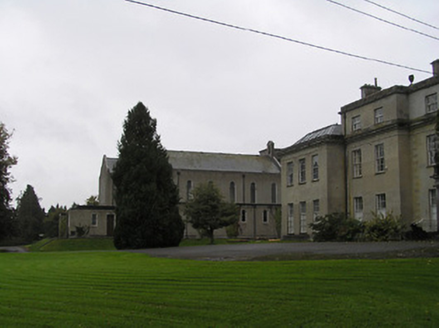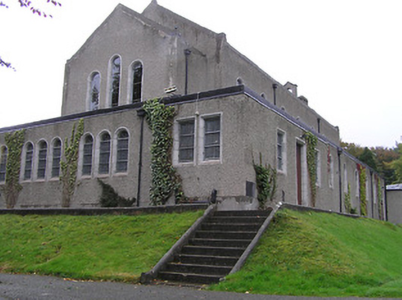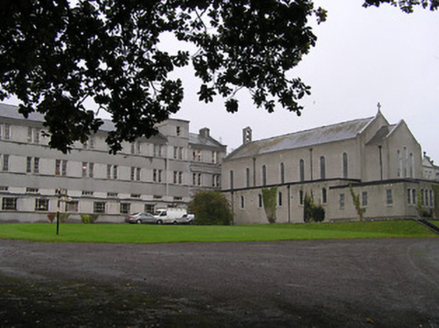Survey Data
Reg No
12305032
Rating
Regional
Categories of Special Interest
Architectural, Historical, Social
Previous Name
Upper Court
Original Use
Church/chapel
Historical Use
Shop/retail outlet
Date
1940 - 1945
Coordinates
240163, 163924
Date Recorded
19/05/2004
Date Updated
--/--/--
Description
Attached eight-bay single- and two-storey private Catholic chapel, opened 1944, comprising seven-bay double-height nave with single-bay double-height lower chancel to north, and seven-bay single-storey flat-roofed side aisles to east and to west continuing on a U-shaped plan into single-bay single-storey flat-roofed sacristy to north. In commercial use, post-1984. Now disused. Pitched slate roofs behind parapets with clay ridge tiles, cut-stone coping to gables having gabled bellcote to apex to south (with round-headed aperture having cast-iron bell, and coping to gable), and concealed cast-iron rainwater goods. Flat concrete roofs to side aisles and to sacristy behind parapets with concealed cast-iron rainwater goods. Unpainted roughcast walls with rendered coping to parapets. Round-headed window openings (grouped in tripartite arrangement to chancel; grouped in tripartite arrangement to sacristy; some square-headed window openings to side aisles) with cut-stone surrounds having chamfered reveals, and fixed-pane fittings having leaded stained glass panels. Round- and square-headed door openings to side aisles with cut-stone surrounds having chamfered reveals, and timber panelled doors. Square-headed door opening to sacristy with rendered surround, and timber panelled door. Set back from road in grounds shared with Uppercourt House.
Appraisal
A substantial chapel representing an important element of the architectural heritage of Freshford on account of the associations with the development of the Uppercourt House estate by the Mill Hill Missionaries as a seminary or training college in the mid twentieth century. Notwithstanding the late period of construction the chapel exhibits a long-established traditional composition with sparse detailing enlivening the design aesthetic of the site. Although no longer serving the original purpose the chapel has been reasonably well maintained to present an early aspect with most of the original qualities surviving intact, thereby contributing positively to the character of the grounds.





